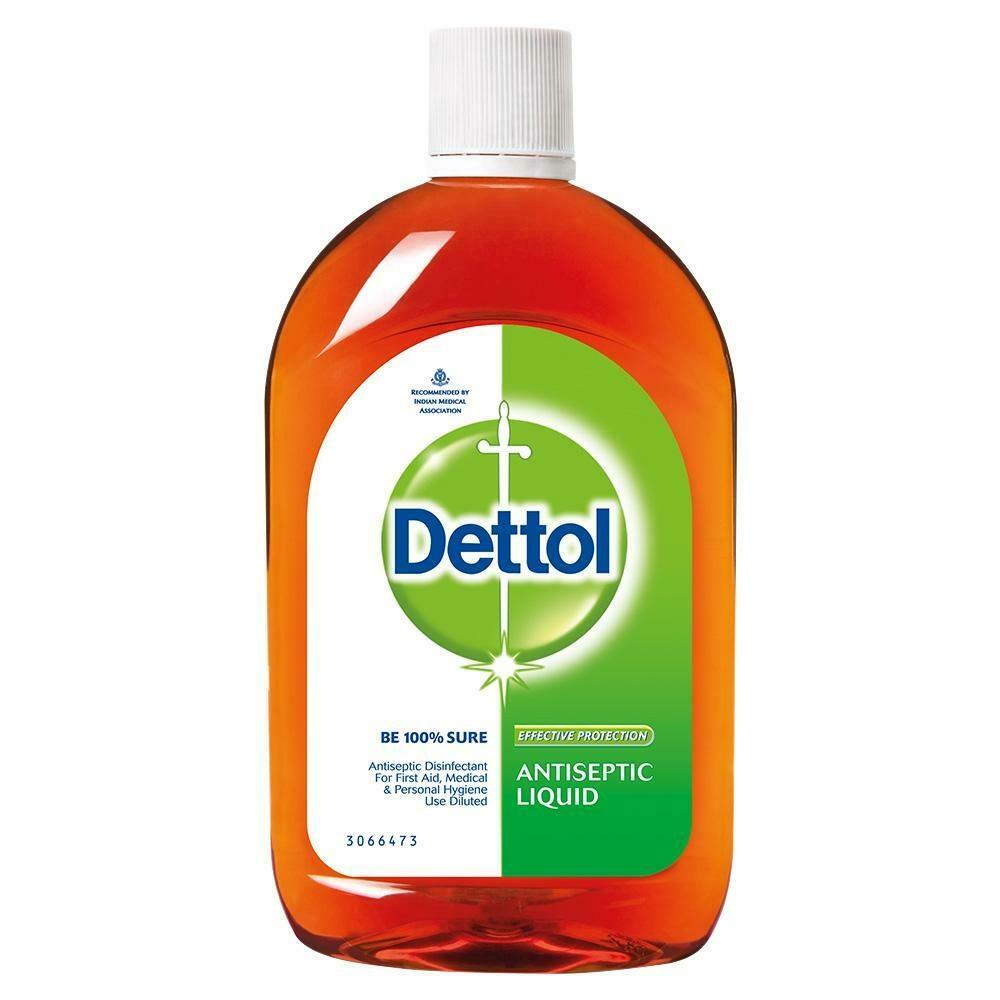Dettol is a household favourite: The golden-coloured Dettol Antiseptic Liquid is a go-to for cleaning cuts, bruises, and abrasions. This makes it an indispensable part of our first aid kits.
One Product, Multiple Uses
The Dettol Antiseptic Liquid has several different uses. This makes the Dettol liquid 5-litre pack a staple in a monthly shopping list.
- This solution is perfect for cleaning up small cuts and wounds. As an antiseptic, it prevents infection in such abrasions.
- The Dettol liquid is often used to soak the hair before shampooing it as a treatment for stubborn dandruff.
- Dettol liquid is commonly used as a disinfectant and is added to the water used to mop the floor or clean surfaces.
- It is added to the laundry or used as a nappy wash due to its excellent disinfectant properties.
- It is also used as an aftershave antiseptic wash.
- Dettol liquid is added to the bath water for a refreshing and clean bath.
- It can be used to clean insect bites, spots, and pimples.
Dettol liquid is a versatile and useful product with many uses, but how does it help? Let’s take a look.
What is an antiseptic agent?
An antiseptic agent helps kill or destroy microorganisms such as bacteria, viruses, and fungi. These are what we usually refer to as germs. The spread of germs through contact or open wounds can cause several diseases. A strong antiseptic solution reduces the risk of spreading germs and infections.
Dettol antiseptic liquid kills about 99.99% of the bacteria, viruses, and fungi that could cause diseases. The regular use of the Dettol solution keeps you and your family safe. Now, let us understand what ingredients go into making Dettol a strong antiseptic and disinfectant.
What are the ingredients of Dettol Antiseptic Liquid?
The ingredients that go into making your trusted Dettol Antiseptic Liquid include –
- Chloroxylenol (C8H9Clo) – 4.8 percent concentration of weight to volume
- Pine Oil
- Isopropyl Alcohol
- Caustic Soda Solution
- Castor Oil
- Caramel
- Water
Chloroxylenol is a widely used antimicrobial to control the growth of bacteria and viruses. It is a known antiseptic and disinfectant that is proven effective in killing many bacteria and germs. Studies also prove that it is a very effective disinfectant. Isopropyl alcohol solution is also used as an antiseptic and is very effective.
Are the ingredients in Dettol Antiseptic Liquid safe to use?
The effectiveness of Chloroxylenol as an antiviral, antibacterial, and antifungal agent has been proven by many studies. While Isopropyl alcohol is not a very effective antifungal, it is a known antiseptic agent.
Dettol Antiseptic Liquid is very safe when used as per label instructions. The liquid should always be used as a diluted solution.
- A 1:20 dilution (1 capful of Dettol Liquid in 400 ml of water) is used as an antiseptic.
- For disinfecting surfaces or mopping floors, a dilution of 1 capful in 1 litre of water works best.
- Adding a capful in about 10 litres of bathwater makes for a refreshing bath.
Safety precautions
Most of us stock up on Dettol liquid to meet our household needs. But we also need to know the safety precautions to be taken when using this product.
- Keep Dettol Liquid out of reach of children.
- Do not store your Dettol liquid 5-litre bottle with food or groceries in the pantry.
- It should not be used in its concentrated form.
- Dettol Antiseptic Liquid should not be ingested and should not come in contact with the eyes or deep, bleeding wounds.
- Do not let pets or babies crawl or lick the wet floor after mopping with a Dettol solution.
- Do not mix Dettol liquid with other detergents or cleaners, or chemicals. This will prevent adverse chemical reactions.
- If you develop redness, rashes, or irritation when in contact with a diluted Dettol liquid. In the rare event of such an occurrence, wash with plenty of water and contact a doctor if irritation persists.
- Avoid using Dettol in your bathwater or as a wash or antiseptic solution if you suffer from skin issues like eczema.
The recent COVID-19 pandemic has made us aware of the need to protect ourselves and our families from disease-causing germs. Picking the right products and keeping our homes clean and safe are the best ways to do this. However, reading the labels of the products we use and understanding the safety of the ingredients are just as important.
